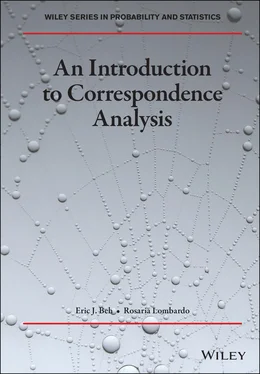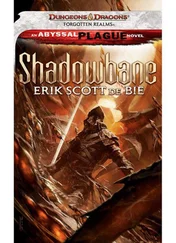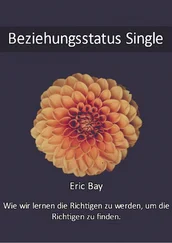Eric J. Beh - An Introduction to Correspondence Analysis
Здесь есть возможность читать онлайн «Eric J. Beh - An Introduction to Correspondence Analysis» — ознакомительный отрывок электронной книги совершенно бесплатно, а после прочтения отрывка купить полную версию. В некоторых случаях можно слушать аудио, скачать через торрент в формате fb2 и присутствует краткое содержание. Жанр: unrecognised, на английском языке. Описание произведения, (предисловие) а так же отзывы посетителей доступны на портале библиотеки ЛибКат.
- Название:An Introduction to Correspondence Analysis
- Автор:
- Жанр:
- Год:неизвестен
- ISBN:нет данных
- Рейтинг книги:5 / 5. Голосов: 1
-
Избранное:Добавить в избранное
- Отзывы:
-
Ваша оценка:
An Introduction to Correspondence Analysis: краткое содержание, описание и аннотация
Предлагаем к чтению аннотацию, описание, краткое содержание или предисловие (зависит от того, что написал сам автор книги «An Introduction to Correspondence Analysis»). Если вы не нашли необходимую информацию о книге — напишите в комментариях, мы постараемся отыскать её.
Readers will benefit from explanations of a wide variety of specific topics, for example:
Simple correspondence analysis, including how to reduce multidimensional space, measuring symmetric associations with the Pearson Ratio, constructing low-dimensional displays, and detecting statistically significant points Non-symmetrical correspondence analysis, including quantifying asymmetric associations Simple ordinal correspondence analysis, including how to decompose the Pearson Residual for ordinal variables Multiple correspondence analysis, including crisp coding and the indicator matrix, the Burt Matrix, and stacking Multi-way correspondence analysis, including symmetric multi-way analysis Perfect for researchers who seek to improve their understanding of key concepts in the graphical analysis of categorical data,
will also assist readers already familiar with correspondence analysis who wish to review the theoretical and foundational underpinnings of crucial concepts.

 for Nominal Variables 3.4 Constructing a Low-Dimensional Display 3.5 Practicalities of the Low-Dimensional Plot 3.6 The Biplot Display 3.7 Detecting Statistically Significant Points 3.8 Final Comments
for Nominal Variables 3.4 Constructing a Low-Dimensional Display 3.5 Practicalities of the Low-Dimensional Plot 3.6 The Biplot Display 3.7 Detecting Statistically Significant Points 3.8 Final Comments for Ordinal and Nominal Variables 5.4 Constructing a Low-Dimensional Display 5.5 The Biplot 5.6 Some Final Words
for Ordinal and Nominal Variables 5.4 Constructing a Low-Dimensional Display 5.5 The Biplot 5.6 Some Final Words and the Partition of
and the Partition of  7.3 Symmetric Multi-way Correspondence Analysis 7.4 Constructing a Low-Dimensional Display 7.5 The Marcotorchino Residual
7.3 Symmetric Multi-way Correspondence Analysis 7.4 Constructing a Low-Dimensional Display 7.5 The Marcotorchino Residual  and the Partition of
and the Partition of  7.6 Non-symmetrical Multi-way Correspondence Analysis 7.7 Constructing a Low-Dimensional Display 7.8 Final Comments
7.6 Non-symmetrical Multi-way Correspondence Analysis 7.7 Constructing a Low-Dimensional Display 7.8 Final Comments . Table 1.3 Men’s shoplifting data: Item stolen versus mid-point of the perpetra... Table 1.4 Cross-classification of 219 alligators by their Size , primary Food o... Table 1.5 Notation used for a
. Table 1.3 Men’s shoplifting data: Item stolen versus mid-point of the perpetra... Table 1.4 Cross-classification of 219 alligators by their Size , primary Food o... Table 1.5 Notation used for a  contingency table. Table 1.6 Expected cell counts, under independence, for the traditional Europ...Table 1.7 R packages and some variants of correspondence analysis for two var...Table 1.8 R packages and some variants of correspondence analysis for multipl...
contingency table. Table 1.6 Expected cell counts, under independence, for the traditional Europ...Table 1.7 R packages and some variants of correspondence analysis for two var...Table 1.8 R packages and some variants of correspondence analysis for multipl... , for Table 1.1.Table 2.2 The Pearson residuals,
, for Table 1.1.Table 2.2 The Pearson residuals,  , for the traditional European food data of ...Table 2.3 The
, for the traditional European food data of ...Table 2.3 The  values from the GSVD of
values from the GSVD of  for Table 1.1.Table 2.4 The
for Table 1.1.Table 2.4 The  values from the GSVD of
values from the GSVD of  for Table 1.1.Table 2.5 The principal coordinates,
for Table 1.1.Table 2.5 The principal coordinates,  , of Table 1.1.Table 2.6 The principal coordinates,
, of Table 1.1.Table 2.6 The principal coordinates,  , of Table 1.1.Table 2.7 The
, of Table 1.1.Table 2.7 The  values of Table 1.1.Table 2.8 Contribution
values of Table 1.1.Table 2.8 Contribution  and percentage contribution,
and percentage contribution,  of each Country catego...Table 2.9 Contribution
of each Country catego...Table 2.9 Contribution  and percentage contribution
and percentage contribution  of each Free-word categ...Table 2.10 Features of the
of each Free-word categ...Table 2.10 Features of the  confidence ellipses for the Free-word categories ...Table 2.11 Features of the
confidence ellipses for the Free-word categories ...Table 2.11 Features of the  confidence ellipses for the Country categories li...
confidence ellipses for the Country categories li... , of Table 1.1.Table 3.2 The
, of Table 1.1.Table 3.2 The  values from the GSVD of
values from the GSVD of  for Table 1.1.Table 3.3 The
for Table 1.1.Table 3.3 The  values from the GSVD of
values from the GSVD of 











